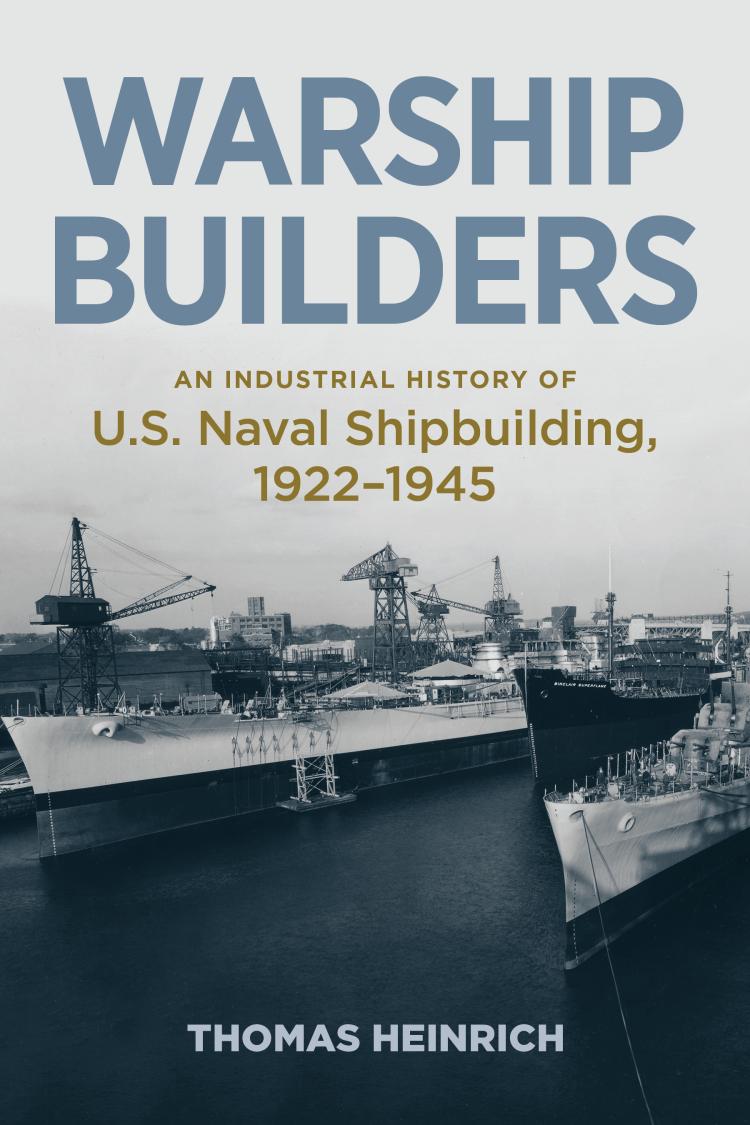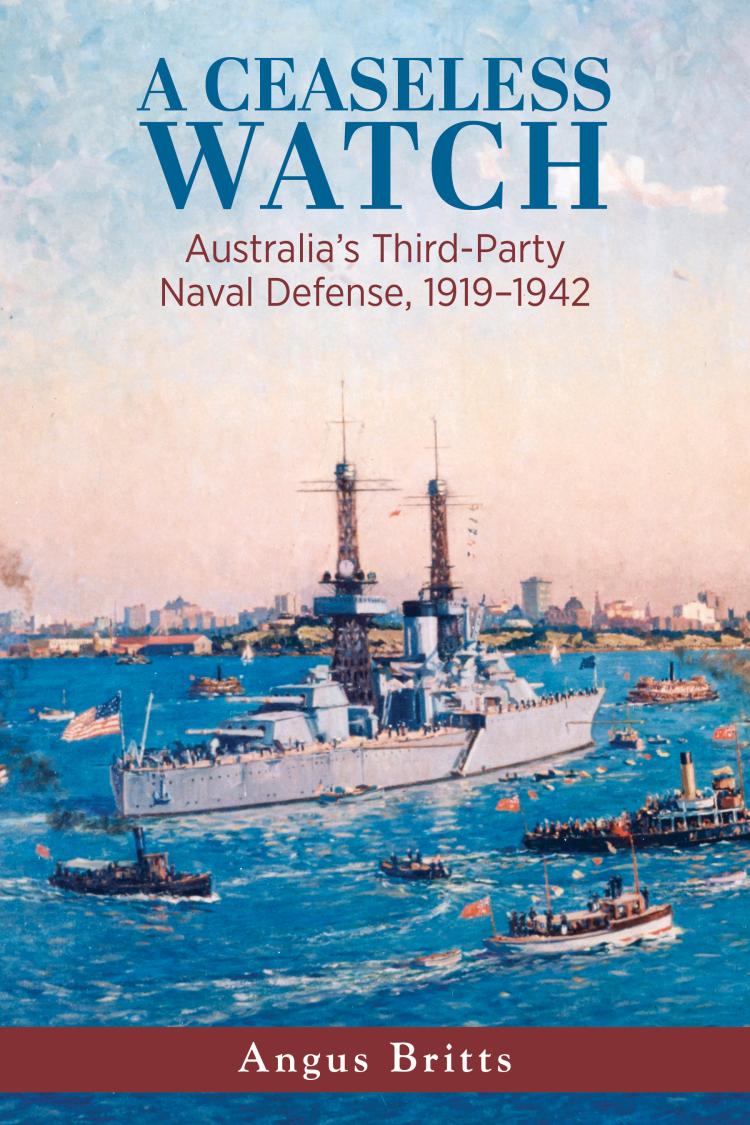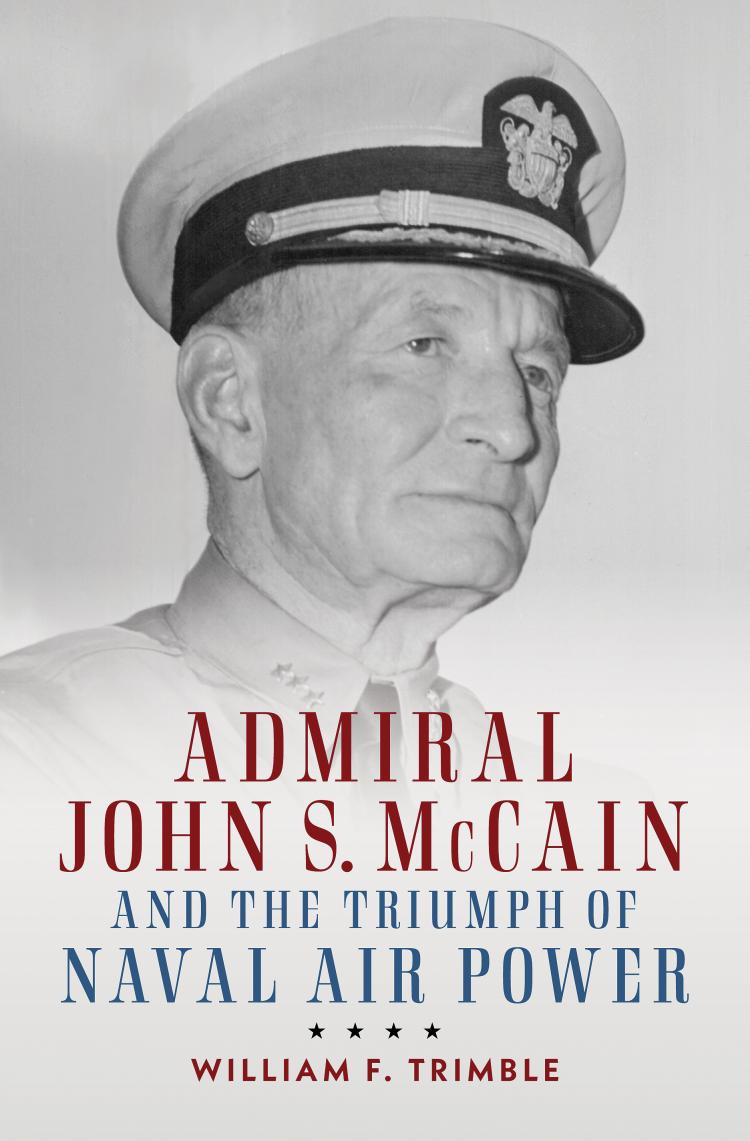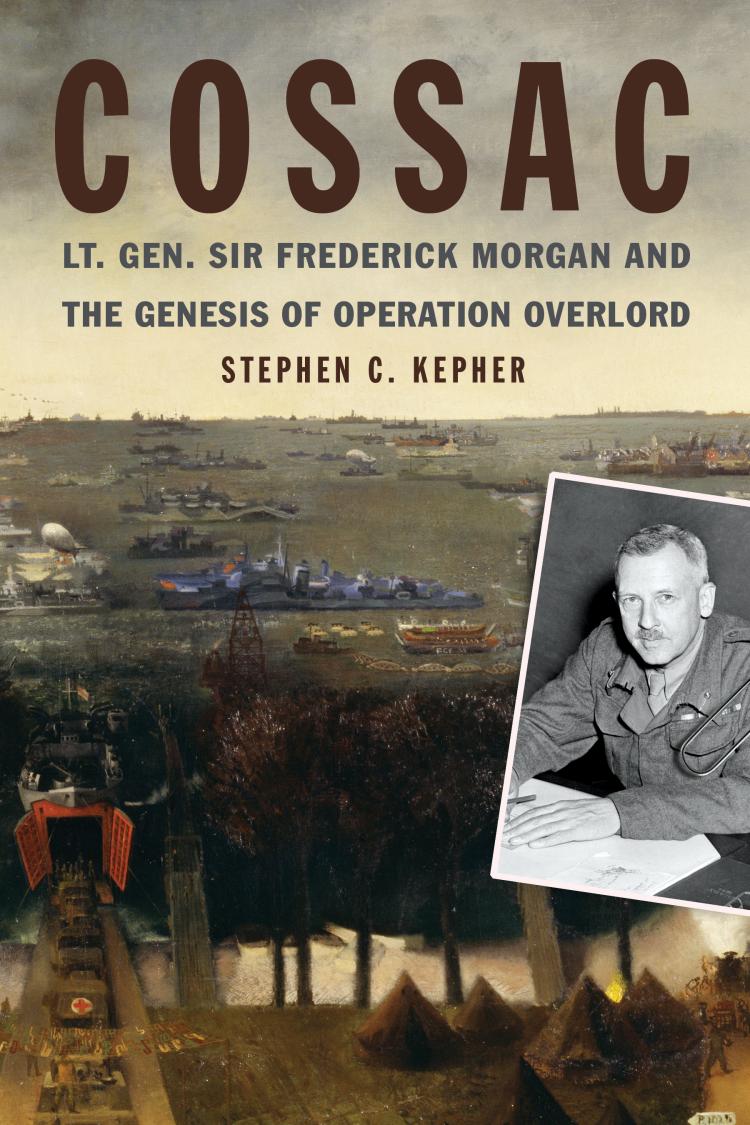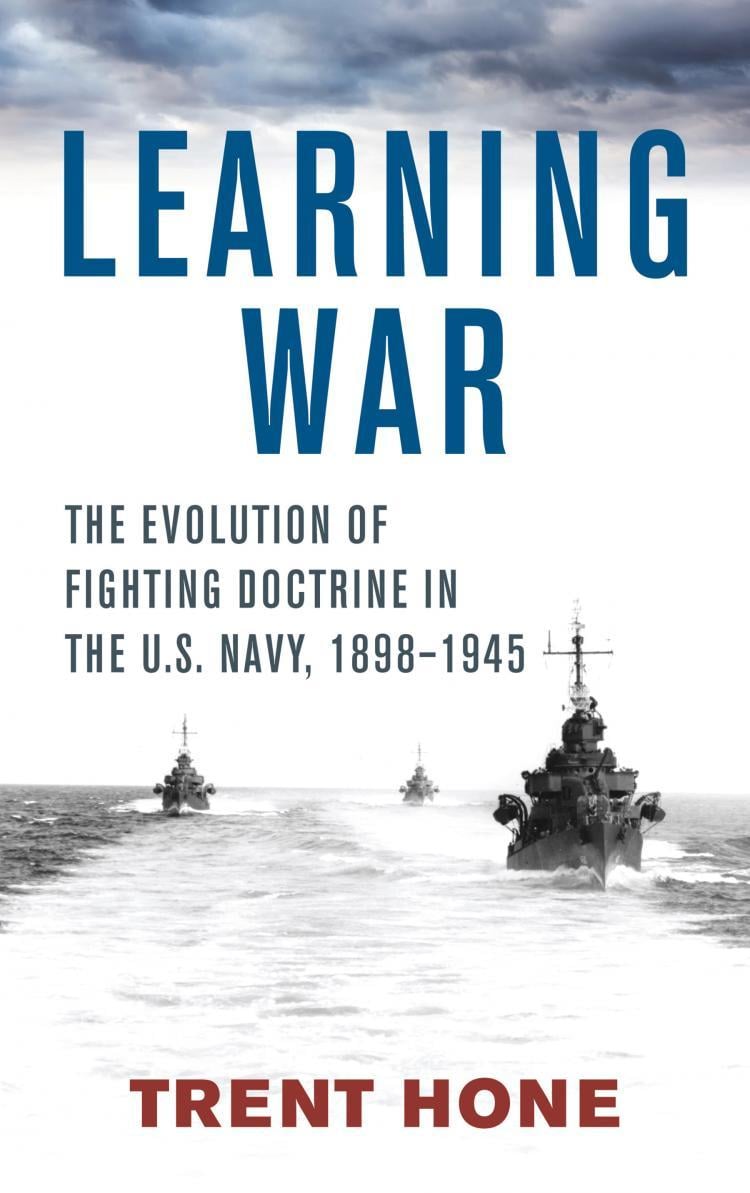Warship Builders
An Industrial History of U.S. Naval Shipbuilding, 1922–1945
- Subject: World War II | Battleships, Destroyers and More | World of Warships Booklist
- Format:
Hardcover
- Pages:
360pages
- Illustrations:
11 charts, 12 figures, 16 b/w photos, 14 tables
- Published:
November 15, 2020
- ISBN-10:
1682475379
- ISBN-13:
9781682475379
- Product Dimensions:
9 × 6 × 1 in
- Product Weight:
20 oz
Overview
Warship Builders is the first scholarly study of the U.S. naval shipbuilding industry from the early 1920s to the end of World War II, when American shipyards produced the world’s largest fleet that helped defeat the Axis powers in all corners of the globe. A colossal endeavor that absorbed billions and employed virtual armies of skilled workers, naval construction mobilized the nation’s leading industrial enterprises in the shipbuilding, engineering, and steel industries to deliver warships whose technical complexity dwarfed that of any other weapons platform. Based on systematic comparisons with British, Japanese, and German naval construction, Thomas Heinrich pinpoints the distinct features of American shipbuilding methods, technology development, and management practices that enabled U.S. yards to vastly outproduce their foreign counterparts.
Throughout the book, comparative analyses reveal differences and similarities in American, British, Japanese, and German naval construction. Heinrich shows that U.S. and German shipyards introduced electric arc welding and prefabrication methods to a far greater extent than their British and Japanese counterparts between the wars, laying the groundwork for their impressive production records in World War II. While the American and Japanese navies relied heavily on government-owned navy yards, the British and German navies had most of their combatants built in corporately-owned yards, contradicting the widespread notion that only U.S. industrial mobilization depended on private enterprise. Lastly, the U.S. government’s investments into shipbuilding facilities in both private and government-owned shipyards dwarfed the sums British, Japanese, and German counterparts expended. This enabled American builders to deliver a vast fleet that played a pivotal role in global naval combat.
Throughout the book, comparative analyses reveal differences and similarities in American, British, Japanese, and German naval construction. Heinrich shows that U.S. and German shipyards introduced electric arc welding and prefabrication methods to a far greater extent than their British and Japanese counterparts between the wars, laying the groundwork for their impressive production records in World War II. While the American and Japanese navies relied heavily on government-owned navy yards, the British and German navies had most of their combatants built in corporately-owned yards, contradicting the widespread notion that only U.S. industrial mobilization depended on private enterprise. Lastly, the U.S. government’s investments into shipbuilding facilities in both private and government-owned shipyards dwarfed the sums British, Japanese, and German counterparts expended. This enabled American builders to deliver a vast fleet that played a pivotal role in global naval combat.
About the Author
Editorial Reviews
“I've been waiting for a book like Warship Builders for a long time. It's an excellent and comparative study of warship construction in four navies by someone who understands the engineering and management processes of warship acquisition. Thomas Heinrich has written a book that will enlighten those readers unfamiliar with warship construction before and during World War Two and delight those readers who've studied warship design and perhaps have helped plan and build warships active today. Warship Builders is a classic.” —Thomas C. Hone, former professor, U.S. Naval War College
“Breaking fresh ground on the building of combat warships for the U.S. Navy during World War II and in preceding decades, this excellent book also corrects common misconceptions about the workings of the American war economy as a whole. The author provides insightful contrasts with wartime shipbuilding in Britain, Japan and Germany.” —Evan Mawdsley, author of The War for the Seas: A Maritime History of World War II, and former professor of international history at the University of Glasgow
“Heinrich's clear explanations of how the major World War II naval powers designed and built their warships cast entirely new light on their differing naval performances and how their level of technological and industrial development affected their fates, with major implications for understanding not only the past but the future.” —Capt. William D. O'Neil, USN (Ret.), retired vice president, Center for Naval Analyses
“Warship Builders is a brilliantly crafted and impeccably researched book that completely transforms the way in which we should think about the rise of American naval and industrial dominance in the Twentieth Century. Discarding superficial Fordist narratives of standardised mass production, Heinrich reveals the fascinating tale of how the U.S. warship industry managed the highly specialised and complex task of flexible batch production on a scale unparalleled anywhere else on earth. Warship Builders is essential reading for anyone interested in the history of the U.S. Navy, U.S. mobilisation in World War II and the triumph of industrial America.” —Joseph A. Maiolo, professor of international history, King’s College London, and author of Cry Havoc: How the Arms Race Drove the World to War 1931-1941
“An excellent examination of a crucial aspect of U.S. industrial mobilization. Heinrich revises our understanding of the diverse skills—technical, organizational, and managerial—required to manufacture complex weapons systems and demonstrates how the flexibility, creativity, and initiative of American shipbuilders was essential to victory in World War II.” —Trent Hone, author of Learning War: The Evolution of Fighting Doctrine in the U.S. Navy, 1898-1945 and co-author of Battle Line: The United States Navy, 1919-1939
“Warship Builders will be interesting to business people, and it is invaluable to anyone connected to Navy and civilian shipyards, ship repair facilities, Navy Supply Corps, Naval Facilities Engineering Systems Command –– as well as WWII history buffs.” —Navy Reads
“Combining information from industrial mobilization, shipbuilding, and construction technologies with business, labor, and political histories is unique in that an author must understand the interrelationships among these complex components. Heinrich is able to do just that, providing well-researched and documented scholarship resulting in his unique, clearly written Warship Builders: An Industrial History of U.S. Naval Shipbuilding, 1922-1945.... Heinrich has written a highly significant military and business history on World War II naval shipbuilding.” —Naval Historical Foundation
“This well-researched and documented book examines the U.S. shipbuilding efforts during the run-up to and including World War II. U.S. shipyards — government owned and privately owned — produced a fleet in numbers that overwhelmed the navies of the Axis powers.” —Seapower
“Warship Builders is a valuable addition to the historiography of WWII and is a rare industrial history. It will be essential to anyone interested in how the USA, Britain, Japan and Germany developed the capabilities they required to fight WWII. It is recommended … as it provides a new lens through which to see the ear at sea during WWII.” —Australian Naval Institute
“This book is a comprehensive look at shipyards including their management and labor, the roles of the U.S. Navy and government support programs, the impact of new technologies, and details of how certain building programs were achieved…. Warship Builders includes well-chosen photographs, excellent diagrams, and useful graphs. The text is jargon-free and covers a wide span of topics in a clear manner. This is an admirable book that describes the scale of U.S. naval shipbuilding, how it was achieved and how it compared to parallel efforts in Britain, Japan, and Germany.” —The Northern Mariner / Le marin du nord
“Warship Builders is a highly readable and enjoyable look into an area where few military historians have tread. With skill, specialization, and experience equal to that he argues was necessary in the shipyards, Heinrich arms the reader with the knowledge required to better comprehend and appreciate America’s warship building miracle in World War II.” —The Journal of Military History
“A necessary starting point for a study of the US Navy’s shipbuilding resources during the World War II era.” —Warship International
—Winner of the John Lyman Book Award in the category of “U.S. Naval History.”
“Thomas Heinrich enlightens readers unfamiliar with World War II combat boat design and construction with the amazing story of how flexibility, creativity, and initiative were essential to victor.” —ARGunners
“This book is recommended for all audiences, but especially for defense and policy analysts who worry about why the U.S, shipbuilding industry, which mostly builds warships and logistics ships for the Department of Defense, is so moribund and needs reform and restructuring. Naval historians, of course, will find much of value in this book, as well, including its fracturing of well-worn myths about the warship construction miracle of World War II.” —History: Reviews of New Books
Warship Builders is a much-needed and groundbreaking volume about the most staggering industrial conversion in American, indeed world, history. With outstanding attention to detail and a pleasantly precise style, Heinrich tackles fundamental inconsistencies in the conventional narrative and provides an authoritative description of the intersections between private and public sectors in the American wartime economy during World War II. — Naval War College




